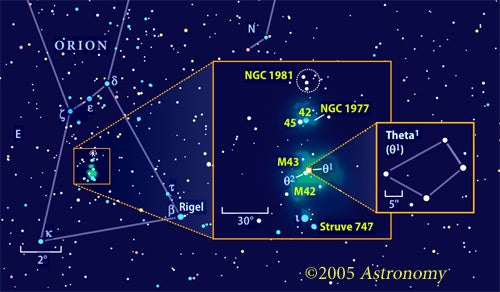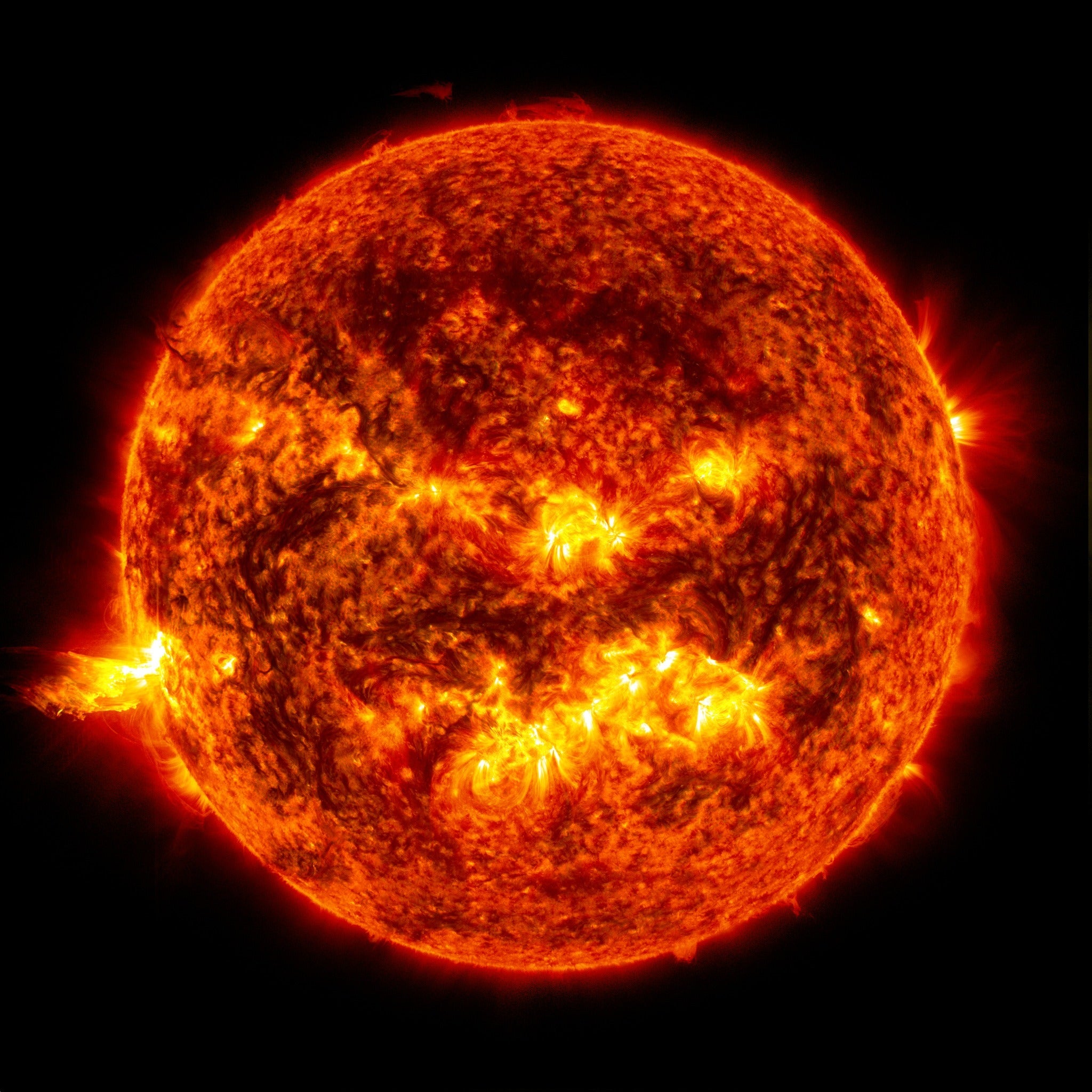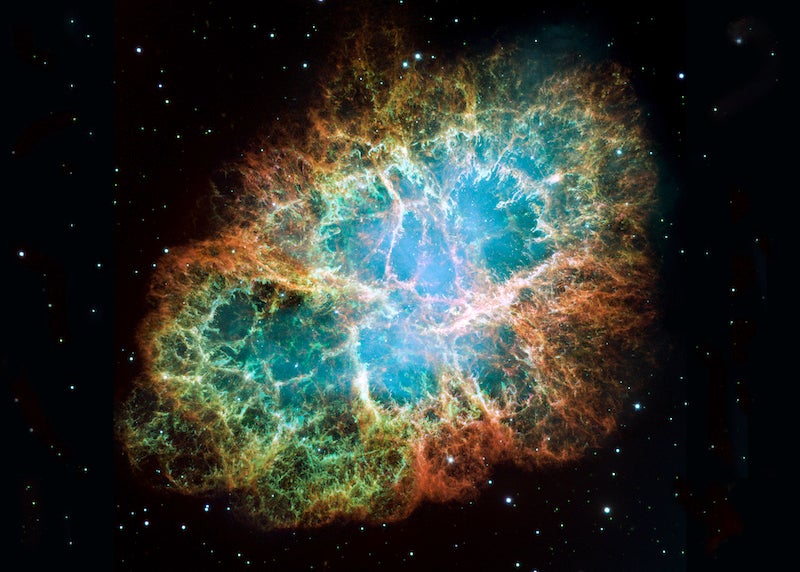Rather than bounce around the winter sky with our binoculars, let’s concentrate on a single binocular field. That’s right, to see everything in this month’s column, you won’t have to move a muscle! Just center your binoculars on the three dim stars that form Orion the Hunter’s “sword,” found just south of his more famous three-starred “belt,” and look around.
Iota marks the sword’s sharp tip and forms a pretty binocular pairing with 4th-magnitude Struve 747 to its southwest. If you have good eyes, you should notice Struve 747 is a true binary star. Just more than half an arcminute separates the 4.8-magnitude primary star from its 5.7-magnitude companion. Together, these blue-white sparklers pose a great resolution test for 8x and lower-power binoculars.
Nudge your attention northward to the middle star in the sword, Theta (θ) Orionis. Two other stars, the western star Theta1 and its partner to the east, Theta2, huddle with Theta. Even opera glasses can show these hot, white stars. Higher magnification reveals Theta1 as a quadruple star system called the Trapezium. Spotting its four stars through typical binoculars can be tough, but it’s possible with tripod-mounted 16x and higher giant binoculars.
Look carefully, and you will notice a gently glowing cloud shrouds the Thetas. This huge complex of ionized hydrogen gas — the Orion Nebula (M42) — might look like a dim, shapeless blur at first.
If so, brace your binoculars against a support to get a steadier view. The shape reminds me of a cupped hand seen from the side that appears to grasp at the Thetas.
Also look for a dark, cigar-shape silhouette nicknamed the Fish’s Mouth against the brighter background clouds. It lies just north of Theta2 and east of Theta1. A little bump protrudes from M42’s northern edge. Even though it’s part of the same complex, Charles Messier cataloged this bump separately as M43.
The northernmost star in the sword is actually two 5th-magnitude stars, 42 Orionis and 45 Orionis. You can see these objects through just about any binoculars from just about anywhere on Earth. If you view under especially dark conditions, try to spot a third, even tougher patch of nebulosity surrounding 42 known as NGC 1977. You’ll need great skies, great eyes, and top-quality binoculars to make out its dim glow, so wait for that perfect winter night before pressing your luck.
Finally, just north of 42 and 45 Orionis lies a faint spray of stars listed as NGC 1981. Many of us pass by this open cluster on our way to M42 without ever noticing it. The three brightest stars in the group form a distinctive arc, with a fourth star to the east completing the illusion of a pyramid. A few fainter stars to the west also belong to the group and bring the total number of stars visible through my 10x50s to 10.
There are so many other fine objects in Orion, they couldn’t all be mentioned in this space. We’ll return here again next winter. But for those who can’t wait, I have assembled a list of some other favorites at Astronomy.com, so be sure to stop by.











